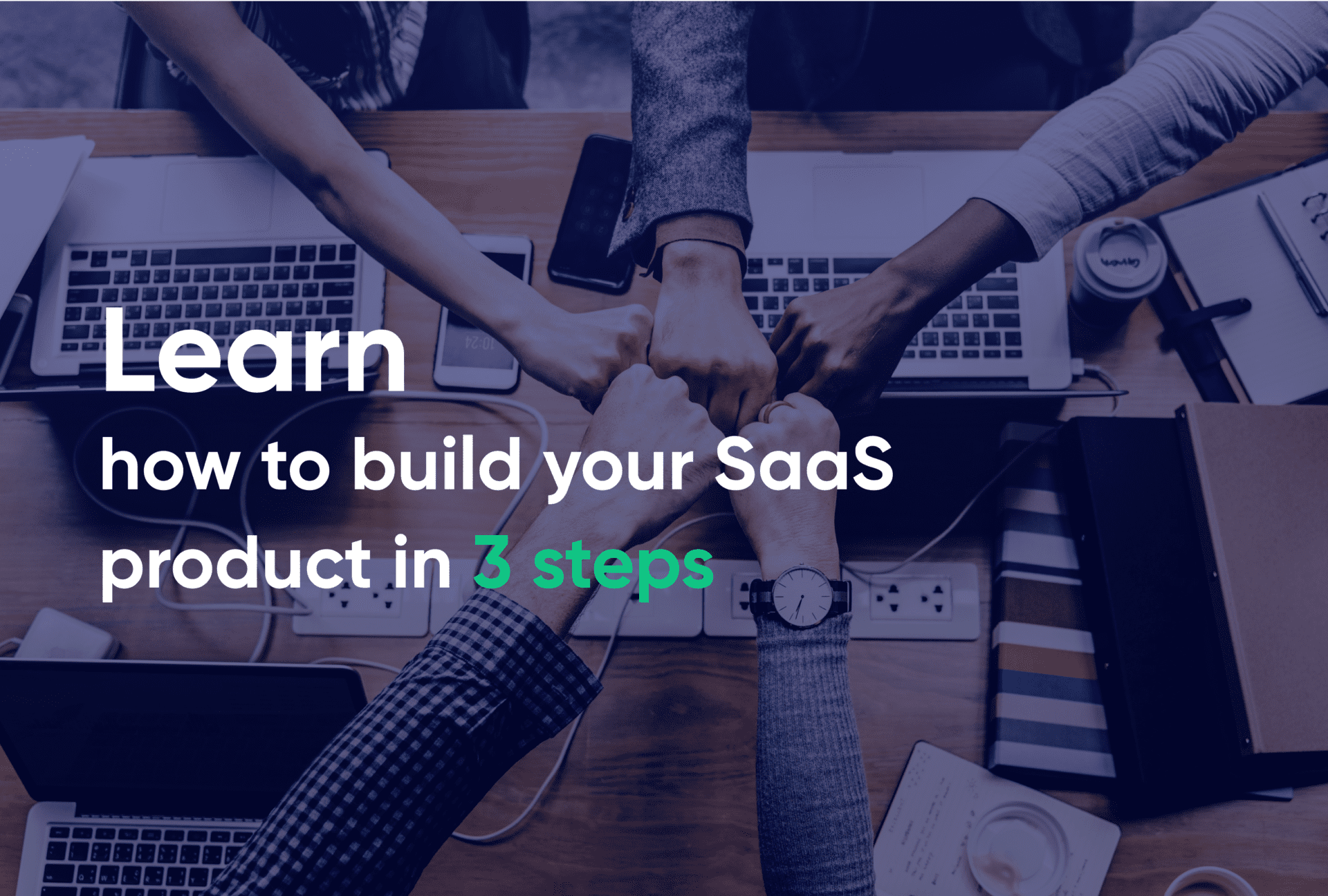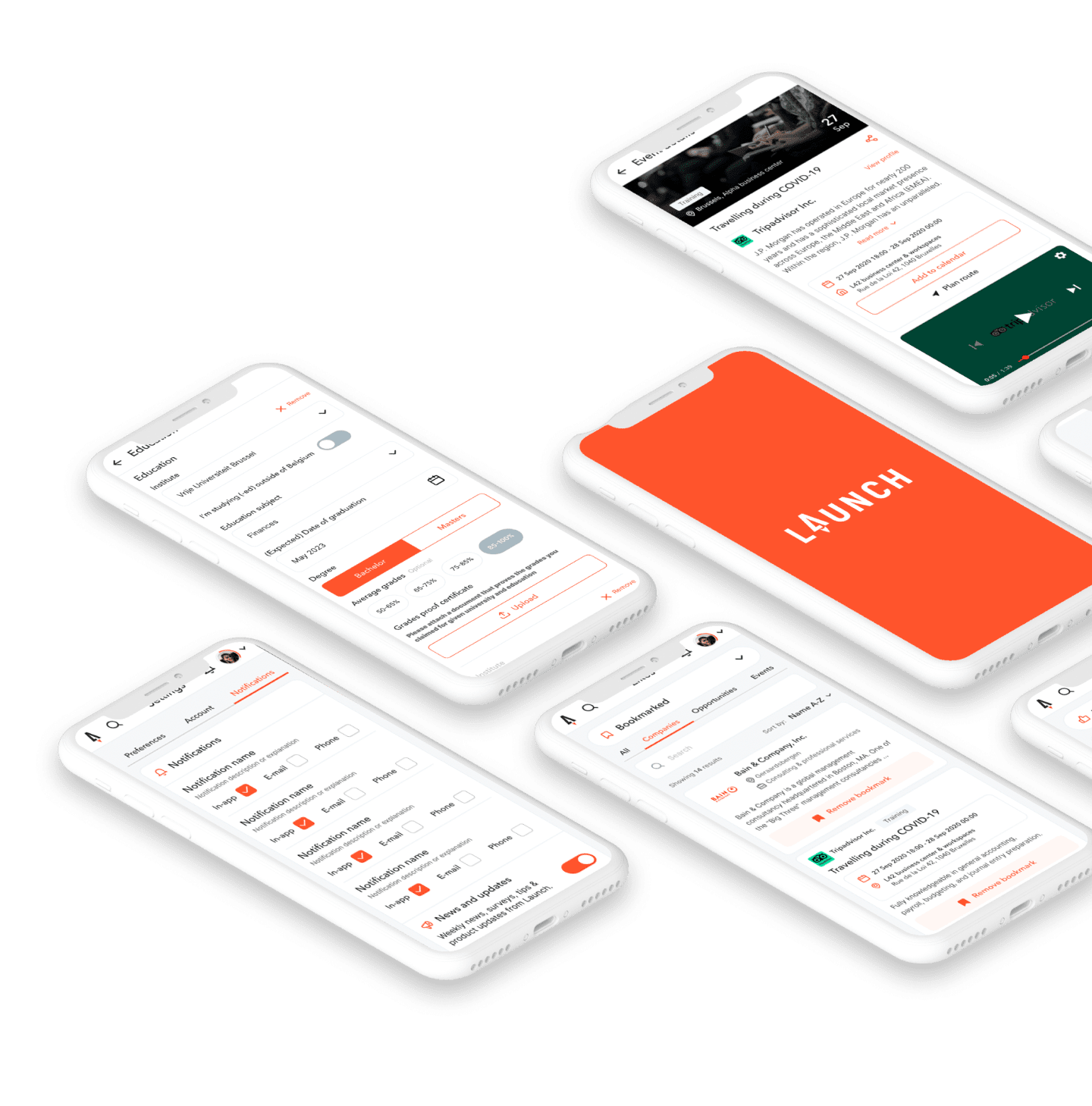Content
How to build a SaaS startup and achieve success? Making a startup dream come true and developing a startup app isn’t easy. First, you need to arm yourself with an innovative idea and the right business model.
If everything is not so simple with the idea – you need to research the market, analyze competitors and look for investments; then, with business models, everything is easier. In this article, we’ll talk about SaaS, one of the most popular business models.
According to Technavio, by 2023, the global SaaS market is predicted to be worth $60.36 billion, registering a 9% CAGR within the four-year period. Therefore, creating a SaaS business is a good idea for aspiring startups. However, most of them fail at the initial stage because developing cloud services is not an easy task at all. But that doesn’t mean you shouldn’t try.
RewiSoft Experience on Building SaaS startups
Our team at RewiSoft has extensive experience in creating SaaS products. We help companies create a product from scratch, support at every stage of development, and advise on all kinds of issues.
One of our startup clients, Oprovi, came to us with an initial version of the product. Oprovi is a platform where people who have experience and are experts in a particular field can provide quick advice and consultation.
Oprovi:
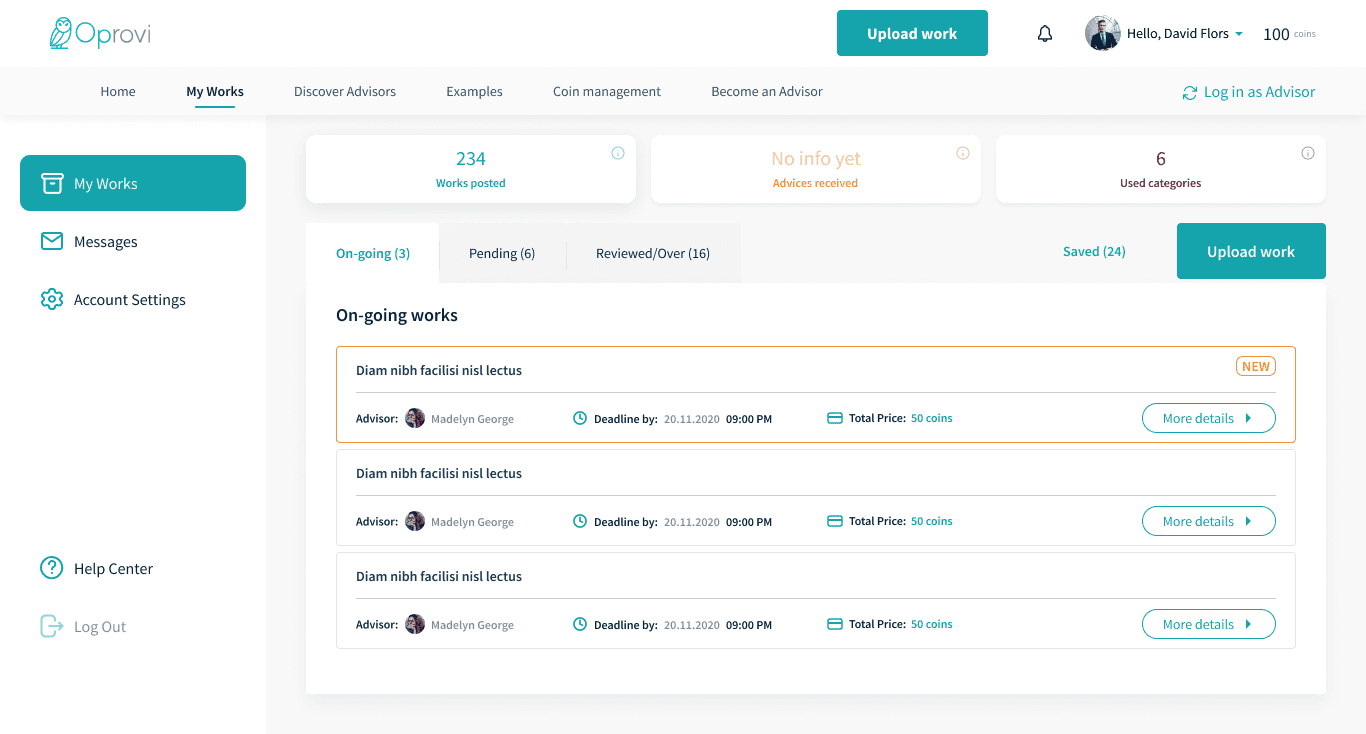

Dashboard My Works
The client came to us only with an idea and our team managed to build the whole system for two parties – for the client and the adviser. We worked on a marketing website and then created a design.
Now the project is still in the process. Our next steps are to create a responsive design and translate the platform to Hebrew. At this stage, the client is satisfied with the results and is looking forward to completing the project.
Another client, Launch, required UI/UX design for the website and mobile application of the platform.
Launch:
Launch enables students and young professionals to be connected with companies in a fast, direct, and seamless manner. The platform helps students explore the best companies tailored to their needs, manage direct communication with them, and ensure suitability and trustworthiness through insights and testimonial sections.
The main requirement of the client was to craft a student-centric design to ensure simple and user-friendly functionality with seamless and convenient navigation for users.
Considering this requirement we offered a design solution to expand students’ searches based on their preferences and allowing them to spot new companies for building deep and future-proof connections. Our team designed a responsive web app for a digital matchmaking platform allowing students and young talents to improve their prospects and visibility for companies.
How To Build a SaaS Startup: What Do You Need To Know
How to start a SaaS startup? Many modern business people are concerned about this question. We will try to help you find the answer to it. It is not enough just to set up the development process well to build a SaaS product. It is essential to prepare your idea before its implementation, and here’s what we will advise you:
How To Build a SaaS Startup: Go-To-Market Strategy
The go-to-market strategy is used by startups that seek to convey their value proposition to the target audience, stay ahead of the competition, and sell a product or service. This strategy embodies the business model and helps determine whether the project will be in demand among the target audience or not.
Before you start planning your strategy, it is worth conducting a detailed study of the portrait of a potential client. Start by researching your potential customers. Namely, pay attention to their interests, values, pains, fears, and desires. You can conduct polls, interviews, etc.
Here are some tips for capturing the market:
- Innovative positioning.
- Pricing that empowers users to test a product and converts potential customers into regular ones.
- Service and sales tuned to increase market penetration and customer base growth, rather than instant profit maximization.
“Go-to-market” is a way to tell the world about all the amazing features your product has and convince users that it deserves their attention. Without a well-thought-out strategy, your idea will remain just a good idea.
Pay as much attention to “go to market” as to the product itself, and then you can really make a breakthrough.
How To Build a SaaS Startup: Getting an investment
Investments are required for your idea to turn into a product. If you monitor the fate of startups through news and TV shows, you should notice that their success stories look pretty incredible. From a garage to billionaires, investors who invest money with the expectation of multiple returns on their own investments become an essential part of the founders’ success.
Depending on the development model, startups are looking for investors at different stages. Projects that are conservative in terms of raising funds take a long time to develop using their money, and this is often justified. But some models imply rapid growth and scaling, without which they simply cannot take off. Such projects attract investments all the time before they are sold to a strategic investor.
It is difficult to find a single recipe for all startups. Still, basically, you should think about investments when the idea has already proven its maturity, and there is a question about creating a business and scaling. We will tell you more about where to look for investors later.
How To Build a SaaS Startup: SaaS Development Process
Like any other business endeavor, developing and deploying a SaaS application requires time, money, and, of course, extensive research. A complicated SaaS development process exists between a clear vision of a successful cloud-based solution and its execution.
As a web design and development agency, we understand that this process entails not just establishing a visually appealing website but also creating a whole SaaS product from the ground up so that clients can use it immediately after it is launched.
We’ll talk about the main stages of the SaaS development process a little later, but let’s talk about what team is needed for this process now. For a successful SaaS development process, you will need a team that consists of:
- Project manager;
- Business analyst;
- UX/UI designer;
- Backend developer;
- Frontend developer;
- QA engineer.
How To Build a SaaS Startup [Go-To-Market Strategy]
How to start a SaaS company? Let’s now take a look at the main components of the go-to-market strategy:
Business case & product fit
Product-market fit determines the viability of a startup and is a key step in building a highly profitable company. PMF – customer awareness of the product’s value: the customer will be disappointed if your product suddenly disappears. Achieving product-market fit is one of the most important goals for a startup.
Product-market fit is achieved from creating a value proposition and cannot be born from spot adjustments in the product – for example, design/color changes, etc. The three components of PMF are:
- Customer (you know who needs your product)
- Problem (you solve a specific customer problem)
- Solution (customer is willing to pay for your solution)
Market Strategy
Building and maintaining a business takes a lot of effort, and making a presence known is an essential part of this task. That is what a startup has always done.
If you strive to succeed in a market where many startups fail, every step you take must be well planned and meticulously implemented.
The biggest challenge for startups is to make their services and products famous, no matter how successful they are. Traditional market strategies don’t always work for startup marketing.
Startups need a well-tuned market strategy that suits their specific goals. Such a strategy involves knowing what works and what doesn’t and what priorities should be given to gain a competitive advantage.
Pricing Model
To evaluate what you need to take into account in the pricing model, we have prepared a special table that will help you with this. It is a basic and pretty good canvas that will suit any startup. However, if you need help and advice about the pricing model, you can contact us. The RewiSoft team will be happy to help you.
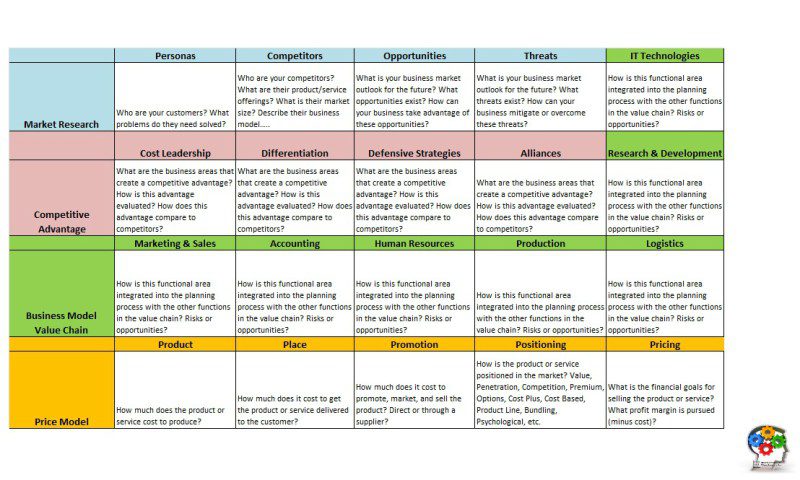

The software as a service market has grown rapidly over the past few years. The sector’s growth was accompanied by increased competition. Thousands of new companies are entering the market delivering high-quality software services that often exceed customer expectations.
The increased level of competition in this sector means SaaS startups need to be more proactive in their business marketing. Here are some of the best ways to promote your SaaS startup to help you stand out from the crowd:
- Develop a strong social media presence;
- Email Marketing;
- Content marketing;
- Using free trials to attract new customers;
- Referral programs;
- Search engine optimization;
- Online advertising.
Customer journey
For your client to do the action you need (for example, buy a subscription to your product for a year), you need to correctly build a customer journey. The user’s journey to the goal should not be complicated or long. Make it as user-friendly as possible and not time-consuming. And the user will quickly achieve his goal, and you will get a regular customer.
Roadmap
A SaaS product roadmap depicts how the product will go in terms of development and improvements.
As a result, it’s a complete document containing sections for product goals, desired or planned future features, timelines, and more.
As a result, a successful SaaS product plan will include:
- a concept for the product;
- a path toward attaining that vision short-term and long-term goals for the team;
- actual vs. expected product progress over time.
It’s vital to remember that a product roadmap is a living document. As a SaaS owner, you are aware that no product is ever released in its final form. With growing product features, SaaS is all about withstanding and adapting to shifting needs.
As a result, a strong SaaS product roadmap is built in such a way that it can be changed anytime an unforeseen shift in the market environment occurs.
KPIs
Here are a few metrics that a SaaS startup should focus on:
- ARR (Annual Recurring Revenue) is an indicator of a company’s profitability, project, and any investment object. SaaS companies that have subscription contracts with predefined contract durations use ARR as a key metric. To calculate this metric, you multiply the number of customers by the billed annually.
- Churn Rate. Staying profitable in your business requires long-term customer retention. The churn rate is the number of customers who stopped using the service after registering. The churn rate is a great opportunity to analyze emerging issues to improve your product or service in the future.
- Sales funnels. How do you generate leads that ultimately turn into paying users, as well as annual or even multi-year contracts? If you have free sign-up periods, what is the conversion rate from free to paid users? Understanding the nuances of these conversions is important.
- Average Return Per Unit (ARPU). It is a metric that helps evaluate the value of a product from a customer’s point of view. ARPU shows how much money, on average, one user brings to the company over a certain period of time.
- Customer Acquisition Cost (CAC). It is the amount that each new client costs you. It is wise to count CACs from different marketing channels to measure the effectiveness of each one correctly.
How to raise money for a SaaS Startup?
Funding is an important but often problematic component of every SaaS startup’s growth and development. You should have answers to the following questions:
- When is the best moment to begin looking for capital?
- What type of funding is appropriate for your SaaS?
- How do you get money?
- Is it necessary to raise financing at all?
The last question has no common solution. Whether you should raise funds is determined by your current situation. Taking money from other people implies giving up independence and having to answer to other people.
At the very least, it implies that the path you had initially anticipated for your SaaS in terms of development and income would be altered. However, a competent investor will give the necessary advice and assist you in avoiding mistakes.
So, if you’ve decided to begin looking for financing, here are the primary steps to take:
- Prepare your SaaS project for funding
First of all, it is necessary to understand what your product is capable of and what general goals you set for it. The next step is to understand exactly what you need this money for. You can’t just come up with the amount you need. You need to have a clear idea of what processes the money will be spent on.
2. Prepare documentation
Check that all of your documentation is in order, including your business strategy, cash flow predictions, and a quick presentation for potential investors. Your financial and legal documents, including the capitalization table, bylaws, and articles of incorporation, should also be produced and maintained.
Have all of your unit economics statistics available, including CLTV (customer lifetime value) and CAC (customer acquisition costs). Consult with a lawyer to ensure that everything is in order.
3. Build a portrait of your ideal investor and start your search
You need to make a list of things that your ideal investor should have. Then you can start the search.
Where can you find an investment?
How to make a SaaS business and find investment? Finding investments is a challenging process and can be time-consuming. However, we will share some tips that will help you not only speed up this process but also successfully get your investment in the end.
Here are some of the best ways to find investment:
3 F formula
Start with the 3 F formula: family, friends and fools. Family and friends are people who know you well, understand your personality and business inclinations. You already have the credit of their trust, for which you will receive investments. “Fools,” in this case, are people who have no experience in investing. They may not understand the risks associated with investments. With the money you receive, you create an MVP and test the business model.
Crowdfunding sites
To find the most unexpected, non-standard investor you can on crowdfunding platforms. Starting from the widest Internet audience, when ordinary users support projects they are interested in (sites like Kickstarter, Pererbackers and Indiegogo), and ending with philanthropists wandering in search of those who will help them fulfill their old dream (RocketHub).
There are also accredited investors, hunters for new ideas – for example, OurCrowd.
Startup launch platforms
For helping startup entrepreneurs, special platforms have been created. They provide information, research and assistance in all aspects of launching a new project, including communication with investors. For example, Startups.co offers a convenient channel where you can quickly find a solvent investor.
Today, Startups.co has 13.9 million users. It is the largest startup community globally, offering exceptional opportunities to attract investors, both to finance a project and as consultants. Another platform, Gust.com, has already invested $ 1.8 million in various startups.
Business angel network
The advantage of “angel” investing is that they not only give you money but literally follow every step, prompt and direct, and most importantly – share contacts and introduce you to the business circle. You can find such an investor on the platforms Funded.com, Angel Capital Association, Angel Investment Network, where thousands of investors are represented, and types of investments are described.
Social networks
Everyone knows the social network LinkedIn, where you can still find investors. In addition to it, there are many professional networks where you can meet potential investors in your industry or find business partners.
Many of these sites are even ready to connect you with investors from other countries who want to join the global business space, and they are even ready to deliver your products to their country. These social networks include EFactor, Xing, Plaxo, Startup Nation, Cofoundr, and Meetup.
Business Incubators and Accelerators
Your startup is your child, and you need to take care of it accordingly. If you want the project to grow and flourish, consider cooperating with an incubator or accelerator. These investors usually want to be actively involved in the implementation of your idea. They want to help turn it into a viable business model and are willing to provide the funds to do so. You can find the nearest business incubator in the directory Business Incubation Association (NBIA).
Venture firms
Venture investors are not interested in all industries but only in the most promising ones. SaaS is just such an industry. The advantages of raising such capital are as follows:
- it is a powerful source of funding that does not impose obligations on the owner of the project – investors voluntarily take all the risks of losing money on themselves;
- venture capitalists can help with knowledge, as they are often experts in the industry. Also, they can bring their network of contacts;
- venture investors usually have a strong track record due to strict regulatory oversight.
How To Build a SaaS Startup [Development Process]
How to build a SaaS startup and build the business of your dreams? Let’s now talk about the development process. You need to know what are the main stages of creating a startup product.
Product Discovery
Product discovery is an important step in the life of every startup or new business endeavor. You can’t confirm or refute assumptions about your clients unless you make the discovery. Without it, there’s a big possibility your product decisions are based on incorrect assumptions.
As a result, you may squander time developing features and products that no one requires. And that generally requires more time and money than you would put in finding the best ones.
During the discovery phase, your concept and its implementation are assessed. A business analyst, a user interface/user experience specialist and a product developer will collaborate to deliver:
- Business, user and discovery goals
- Stakeholder interviews
- User interviews
- Competitive analysis & SWOT analysis
- Personas


Discoveries
- Business model canvas
- Lean canvas
- User stories
- Customer journey map
When we worked on the Launch project, we first understood the client’s needs, and then our client provided us with user research. Then we evaluated the web application’s business logic and analyzed existing market research conducted by the client.
The discovery phase is divided into many stages and often takes one to several weeks to complete, depending on the project’s complexity.
If you want, you can go through the discovery phase:
- to assemble a team as soon as possible. Not just any team, but a team of experts who will rapidly understand your company concept and develop an MVP with the essential features;
- to put out actions that will result in the greatest results with minimal work;
- to examine the data you have and develop strategies for future growth;
- to get an unbiased, clear, and in-depth examination of your concept, a plan, and the expected outcomes.
UX Design
According to Fortune, 90 % of all businesses fail, and the most common reason is a lack of knowledge of what the customers require. In other words, they do a poor investigation of users’ concerns and behavior.
As a result, most new products fail to gain traction because they fail to provide a convincing argument for why they are helpful or relevant. As a result, every business should address UX design from the outset, assessing the target market’s pain points and developing a product that connects with potential customers.
UX design stage usually includes:
- Information Architecture
- Prototyping
- Wireframing
More about the UX design process you can read in our free guide: The Product Design Guide. UX Case Studies From RewiSoft.
When we worked on the Launch project, the main goal of the project was to create UX/UI design from scratch and build the business logic.


Sitemap student
Equipped with market/competitors’ research details provided by the client and leveraging feedback from the target audience, we created high-level desktop wireframes considering users’ needs. Afterwards, once wireframes were approved by the client, we started the UI design process.
UI Design
The term “user interface design” refers to how people interact with the interface of a product. Designers frequently strive to develop designs that are simple to use and pleasant for users.
In developing the user interface, it is critical to have a thorough grasp of the job being done by the user. While startups conduct user research, they should ask users to express their thought processes when performing a task.
That can assist in guaranteeing that the interface does not interfere with the user’s ability to complete their objectives. Another method for gathering user data is to observe them while they use the product, noting moments when they seemed dissatisfied, puzzled, or had a strong emotional response.
You may also watch your clients while they use rival software to determine where they are having difficulties. This allows you to discover which important parts are missing from your product and which may be added.
UI design stage usually includes:
- Design system
- An accessible interface
- Usability and likeability
- Emotional design
For the Launch team, we came up with a simple and memorable logo based on our design solutions. We chose outrageous orange and black colors for the main pallet on the while background to outline the accuracy. A minimalistic color palette and logo design indicate clarity and simplicity.
We made the UI design of the web application straightforward, using a white background with black text and orange buttons to make concise accents.
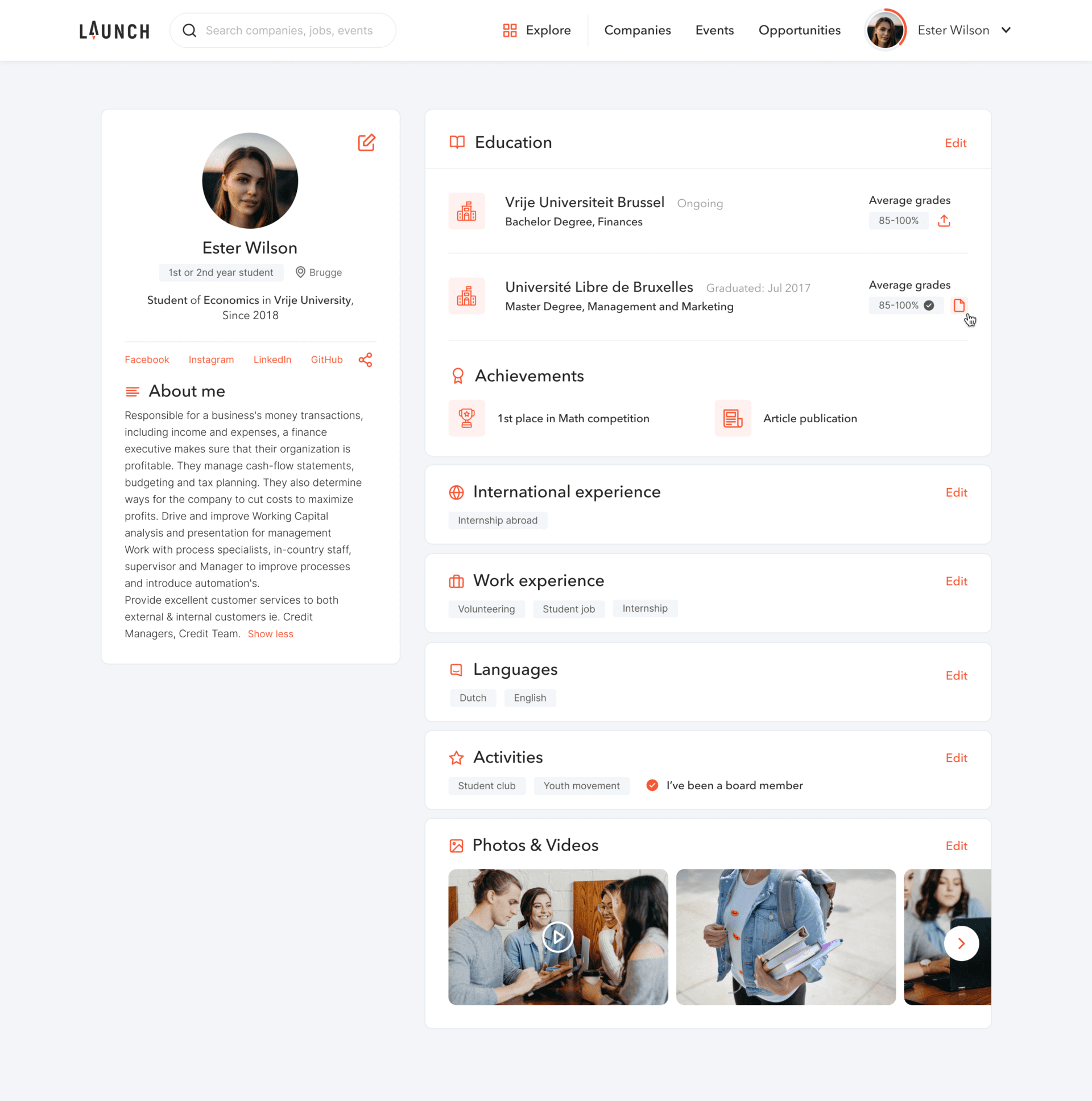

Student profile Full
Considering that users tend to search mostly from their smartphones, we focused on mobile and created an app from a mobile point-of-view to ensure high responsiveness of the application.
Testing
How to start a software as a service company and not fail? The answer is simple – test the product! Even with a highly skilled and capable product team, mistakes sometimes occur. We are all humans. As a result, testing is critical for businesses that want to offer high-quality software and detect bugs before their customers do.
However, testing isn’t just for large businesses with an unlimited QA budget. It may be extremely useful for smaller businesses wanting to grow their product, give excellent customer service, and establish a trustworthy brand.
In a fast-paced startup, the whole team is invested in the company’s success. A lot of work, effort, and hours go into developing a product that customers like, and the software’s quality should reflect this. If your startup is tech-focused, having a bug-free app might be the difference between success and failure.
Testing stage usually includes:
- In-depth interviewing of focus groups
- UX Eye Tracking
- Assessment research
- Usability reports
At RewiSoft, we have our own UX Lab. We use UX Eye Tracker that allows exploring user behavior during interaction with the product. Only 1% of companies use this method. An eye tracker is a unique tool that captures the movement of a person’s gaze and helps get a record of where and for how long the user was looking.
Development
Product development consists of two parts: frontend and backend. The frontend is the part that the user interacts with. The backend is responsible for communicating the frontend with the server and databases (in other words, it defines how your application functions).
Typically, the development process begins with defining a technology stack – the tools to implement your idea. The choice of the right ones is influenced by your business goals and features that need to be implemented. If you do not know what exactly you need in development, ask a professional for advice.
Launch MVP
When you have successfully gone through all stages, you can launch your product.
Do you think this is the end? The work on the product has just begun! There are still many iterations ahead of you, and you need to be prepared for this.
After the release of the product, your task is to collect feedback from the first users quickly. How to do it? For example, conduct a survey or interview. After receiving feedback, it will be clear what needs to be changed: something will have to be added, and something will have to be permanently removed.
Don’t be discouraged if your product gets a lot of negative reviews – this can be used to improve your product.
MVP is an important milestone for anyone looking to create a startup. It allows you to research the market and quickly test your business idea to understand whether it is worth developing the product further.
The main challenges in SaaS Startup Development
Every startup business faces a number of challenges. We have compiled a list of the main ones you should pay attention to when building SaaS products.
Team selection
Very often, SaaS startups make mistakes when choosing a product development team. It is vital that the team that will work on your product is a SaaS expert and knows how this market works. If you need such a team now, contact us. We will be happy to help you!
Identifying the market
The primary difference between a startup and any other type of business is that a startup does not always have a clearly defined market to work with. In reality, entrepreneurs frequently build their own markets by describing an issue that no one felt needed to be solved previously.
Obtaining a sufficient rate of growth
If you truly have something fresh and new to offer the market, you will receive some free exposure in the first few weeks or even months following your launch. Mentions of your business will emerge in various media outlets; it may be hailed for innovation or characterized in uncertain terms, but as long as you remain in the limelight, everything is OK.
However, this stream will eventually dry up, and public focus will shift to new, more recent ideas. You must be prepared for it, and the only way to fight this receding focus is by exponential development.
How much does SaaS Development Cost?
The cost of developing SaaS depends on the size of your project, the number of features, and specific characteristics. All of this should be determined during the business analysis stage to avoid burning your funds due to the wrong strategy.
There are several cost categories when creating a SaaS product:
- Product discovery
- UX design/UI design
- Development
- QA (Testing)
The location of your contractor will also affect the price. We have identified the main 4 regions that offer experienced and skilled IT specialists. Let’s consider how much money you will need for each stage separately based on the country in which your contractor will be located:
| Product discovery | UI/UX design | Development | QA | |
| Eastern Europe | $35-60/hr | $35-60/hr | $30-80/hr | $25-50/hr |
| Western Europe | $45-90/hr | $45-100/hr | $55-100/hr | $30-65/hr |
| South America | $25-55/hr | <$45/hr | $25-55/hr | $20-40/hr |
| Asia | $15-25/hr | <$40/hr | <$45/hr | <$30/hr |
How To Build a SaaS Startup: Summary
The SaaS market is still evolving, so it’s time to release a new and unique product. It is important to remember that a SaaS product idea must be well thought out and accompanied by business and market analysis.
It is equally important to have an experienced team that knows the SaaS world well and can develop a product that is truly valuable for users.

